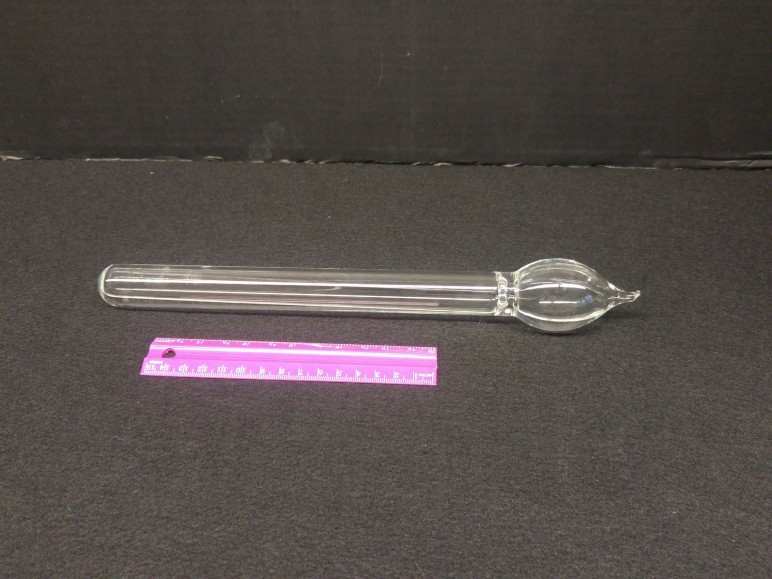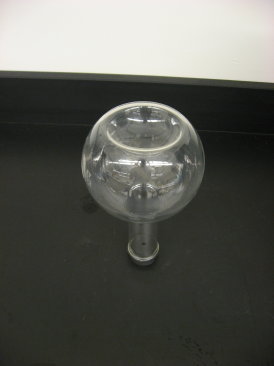Skip to content


- The water-containing flask has been partially evacuated, allowing the water inside to fall as one solid column. (Typically water breaks up as it falls through air, due to drag.) The sound made when the water hits the bottom is quite remarkable.
- To use: hold the flask vertically with the bulb at the top. Quickly shake the flask up and down once. When the water hits the bottom it sounds (and feels!) more like a solid metal object than a fluid. In fact, I’m convinced that the flask would break if shaken hard enough, though the information sheet doesn’t caution against it.
- Located in L02, section D1.


- Demonstrate Boiling at a Reduced Temperature and Pressure.
Initially, the flask should be in a normal upright position and partially
filled with water. After bringing the water to a boil, close off the neck
with a rubber stopper fitted with a thermometer and invert the flask. Place
ice in the concave bottom. Water should start to boil again, and continue
to boil until it is only 15° or 20° above room temperature.
- Located in L02, section C3.



